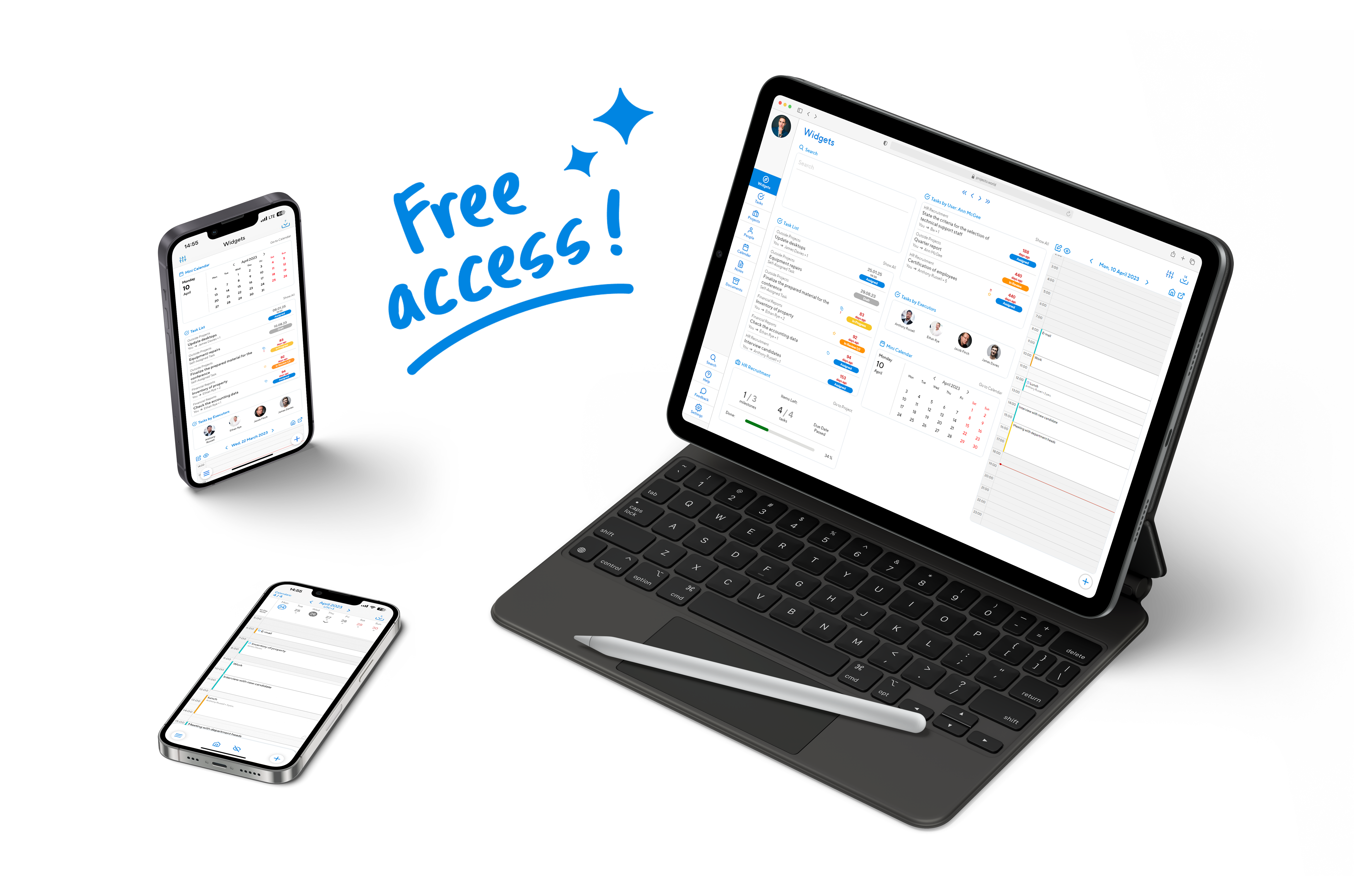The question of business automation is always about efficiency. The less you spend human resources, the more favorable you spend your budget and the less the probability of error due to the well-known ‘human factor’. But now we are not talking about automation in general. We have considered this issue separately earlier — here.
The matter concerns automation of labor of managers and management in general at modern enterprises.
Once upon a time, centrally issued diaries with branded calendars were the height of management automation. But times have changed. Then software solutions such as Microsoft Outlook replaced the ‘paper’ method of planning. But many corporate planners were not accepted by managers because of their unhandiness and difficult implementation.
What trends in the market have formed by today?
Let’s get to the bottom of it together.
General market trends in task automation
So, the most interesting find for small and medium-sized businesses has been CRM systems. These are usually online services that take care of many issues of communication with customers. They can take into account a huge amount of information about existing or planned contacts with a buyer or customer, know about customer preferences, and they are able to store information about communication methods (time, phones, who the responsible manager is), and so on.
The market for CRM systems is very dynamic. There are many players here. Some offer niche products, some offer universal products, some rely exclusively on the corporate sector, some offer an incredible number of ready-made integrations, their own features of transaction support (sales funnel management), and much more. There are no clear leaders, and it is unlikely that anyone will break through in the near future.
At the same time, since CRM-systems actually store the entire client base, companies ‘grow into’ the IT-infrastructure chosen initially. It will be simply unrealistic to change the provider after a year or two of work. This should be known and taken into account.
The second interesting find for small businesses is business website builders. They largely automate and simplify the process of developing and launching their own sites. It is clear that this approach is not suitable for blogs, large corporate projects and other complex types of sites.
But It is pleasant to implement simple and effective lendings, business cards, beautiful portfolios and other types of small-page projects with the help of constructors. No programming skills are needed, and sites can be launched in a couple of clicks (based on standard templates).
At the same time, the payment, importantly, is not capital, as in the case of CMS-based development, but on a subscription basis (with monthly, annual, or quarterly payment that can easily fit into operating costs).
Moving to the cloud is a common trend for many business tasks: telephony, customer notifications, cash registers, settlement services in banks, etc.
Task Schedulers Market
Planning tools have also started to move online, similar to other business automation tools. The cloud format turned out to be much more convenient than the others. There is no need to implement anything at the enterprise, buy software licenses, install complex distributions on user workstations, keep track of updates, hire extra staff in IT departments, and so on.
The service format turned out to be more effective. Moreover, we can already see from the example of other business tools that this subscription approach is quite viable. Everyone benefits: both software producers, as they receive a constant flow of cash receipts from clients, and clients themselves, as the product is developed and updated as it grows without any additional investments. Don’t need the tool anymore? Just stop paying for the subscription, and that’s it!
What are the other benefits of implementing online schedulers:
- Tight coupling with mobile apps. It is very difficult for Stand-Alone software to create and maintain its own set of mobile applications. Only a few companies can afford such a feature (these are only large companies)
- Platform independence. The only requirement for a workstation is a modern browser.
- Reliable server architecture. You don’t need to buy your own equipment, hire a sysadmin, worry about backups and other subtleties of work. You simply rent everything you need on a turnkey basis.
So, how to automate tasks and projects today?
Choose a cloud-based task scheduler with a reliable infrastructure and the ability to fine-tune it to your requirements without the need for manual tweaking. The selection of ready-made solutions makes this possible.
It would be foolish if we didn’t recommend our own service — Projecto.
There are ready-made apps for iOS and Android. All important documents, discussions, events, tasks, counterparty data, and much more can be stored here.
However, it’s better to see once than hear a hundred times. Try our online planner. No registration or SMS!
